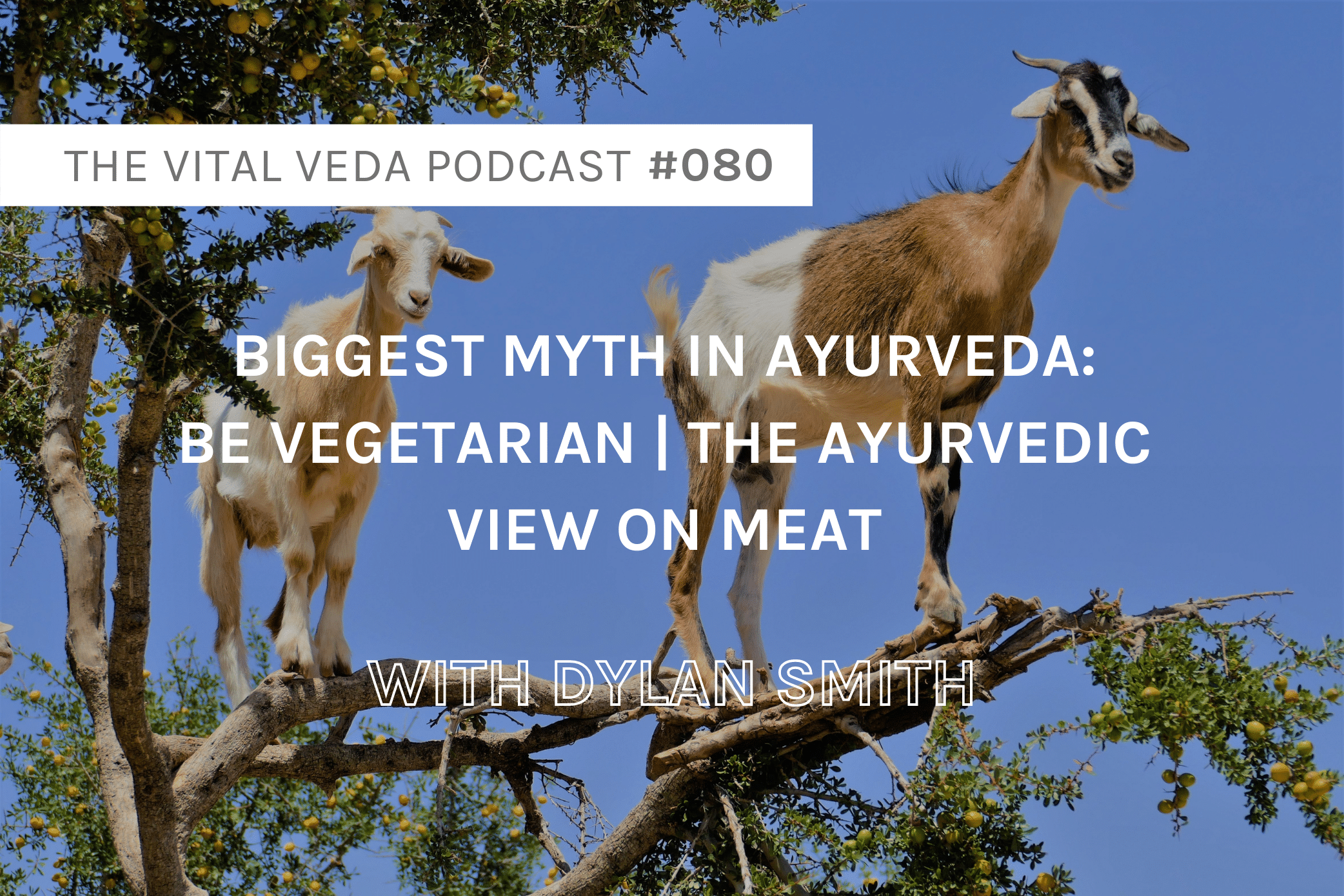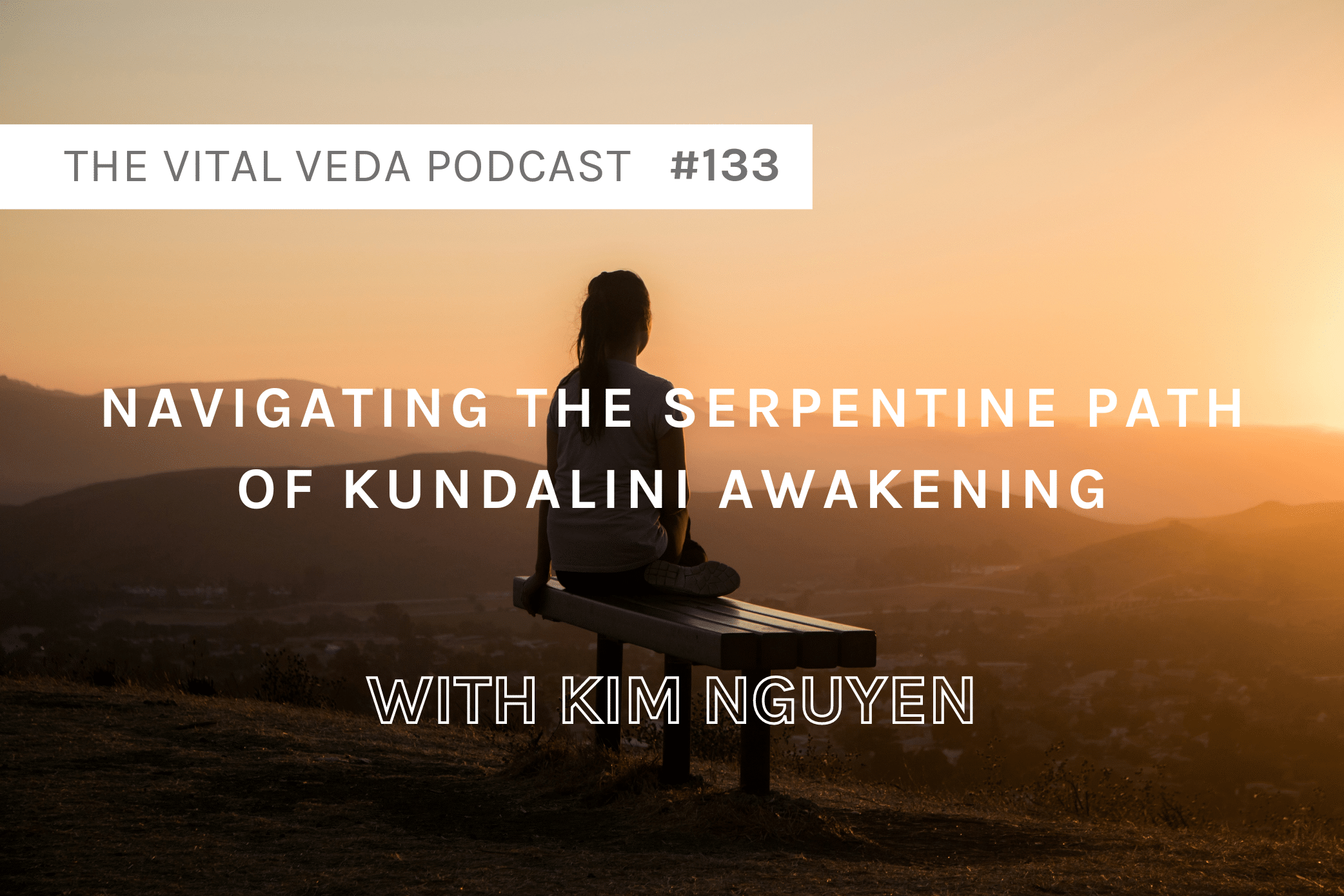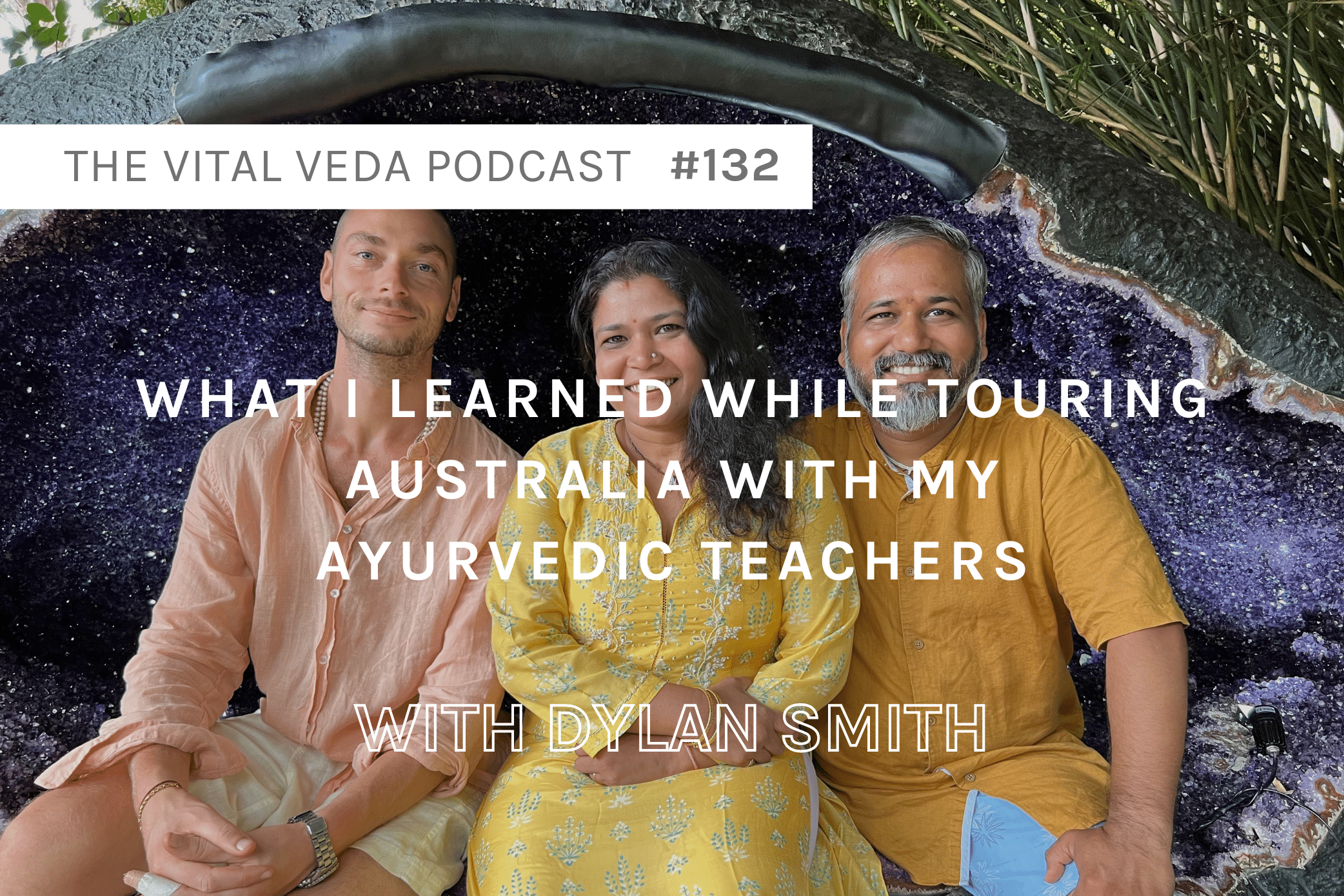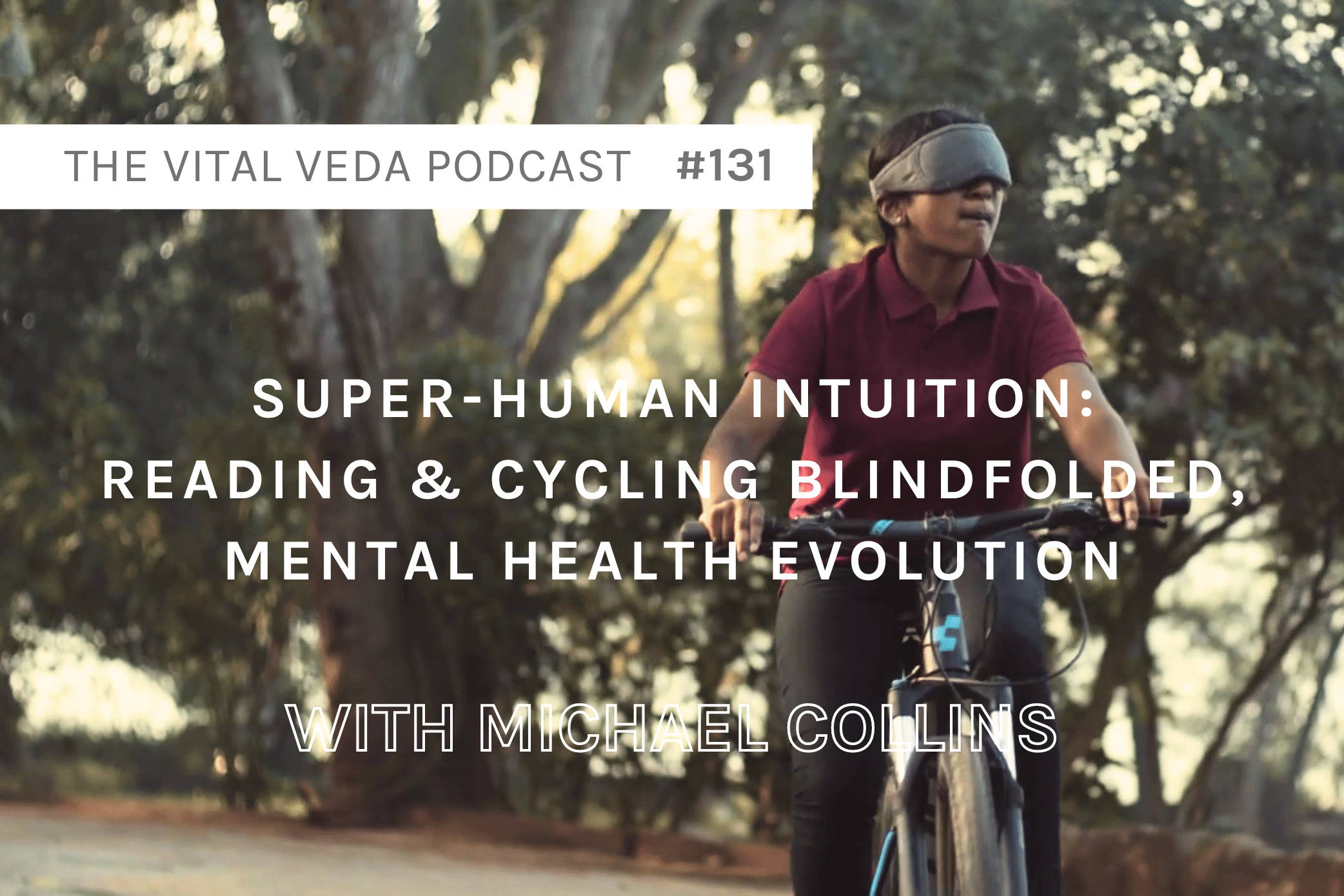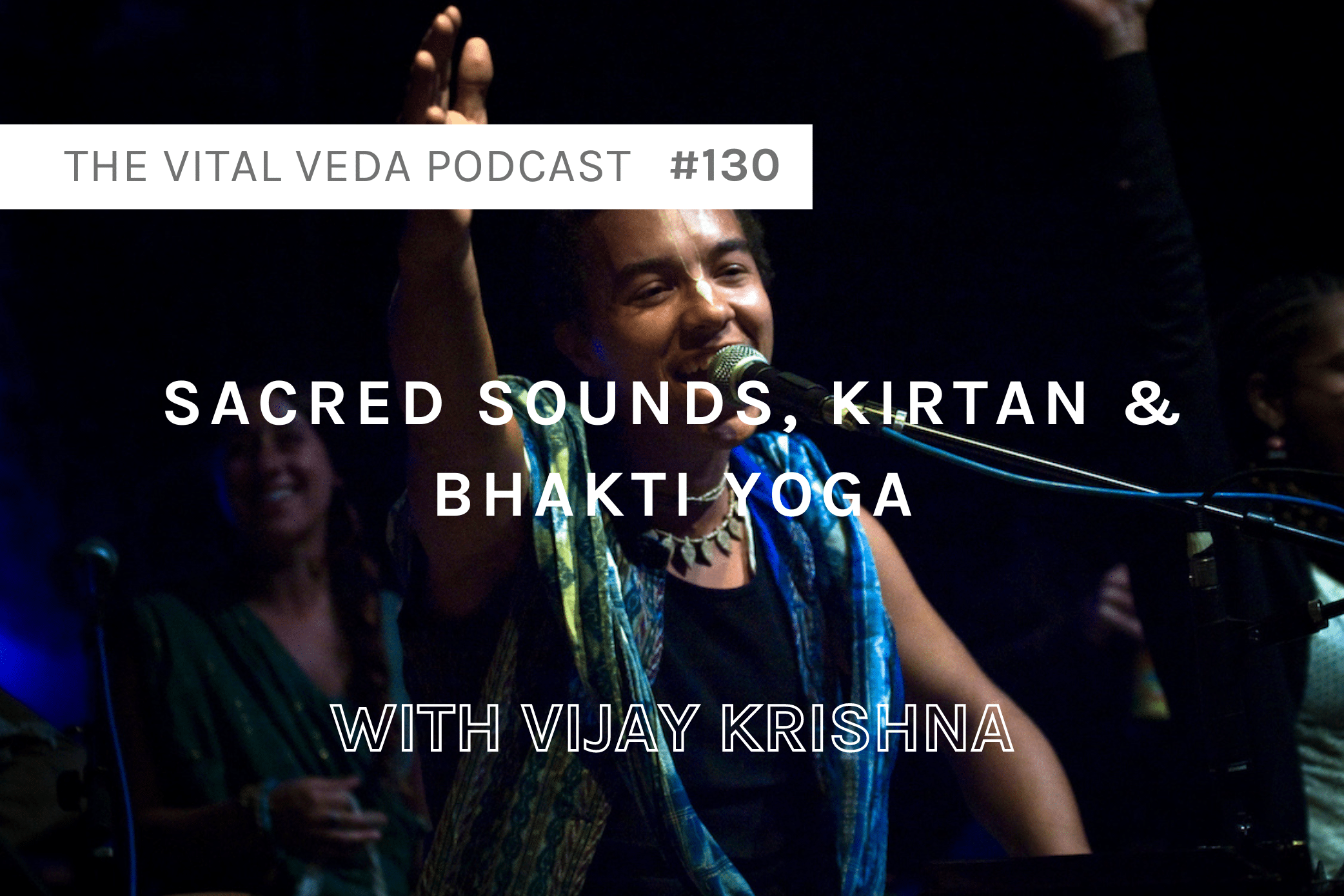When ancient wisdom gets popular, confusion and misunderstanding tends to arise within.
The essence and authenticity tends to blur, and this has happened with the knowledge of Ayurveda – the Sacred Science of Healing and Higher Consciousness.
Ayurvedic practitioner and educator Dylan Smith, known for his authenticity and devoted role to keeping the purity of Ayurveda alive and thriving, dispels the 3 Biggest Myths of Ayurvedic medicine.
These MYTHS are:
-
“You have to be vegetarian” according to Ayurveda – or even that “Vegetarian is the best diet.”
-
“Onion and garlic are prohibited”.
-
“Ayurvedic medicines are commonly contaminated with heavy metals.”
IN THIS EPISODE WE DISCUSS:
Contents hide
Ayurvedic Principles and How They Are Being Taught In Modern Days
Not eating meat is not a part of the Ayurvedic principles.
The Ayurvedic Qualities (Gunas) of Meat
Meat is generally considered to have two gunas: rajas (stimulating, agitating) and tamas (trapped light, inertia).
Meat is a heavy-to-digest food.
The Ayurvedic Perspective on Meat Eating
Meat being approached as medicine in Ayurveda.
Practical Medicinal Uses of Meat
The Importance of Ethical Sources of Animal Meat
Ways to Replace Meat In Your Diet
It is important when not eating meat to replace complete proteins: this means making sure that you are eating the 9 essential amino acids that make up a protein – now this is not necessarily easy with a plant-based diet, but also not impossible.
By mixing a legume and a grain (it is important to diversify your grains) you are ingesting the 9 essential amino acids.
Quinoa, buckwheat & soy contain all 9 essential amino acids.
-
Soy can affect the hormones (especially estrogen) so it should only be a regular food for those who have been brought up eating soy since childhood & have physiologies that are adapted to digesting these foods.
There is a lentil in India called the Urad Lentils (Black Gram Lentil) which is often referred to as “meat for vegetarians”. You can either eat that lentil or use Urad flour which is high in protein.
-
This grain is not to be had every day.
Mung Dahl is also very good, tridoshic and can be had every day, but has less protein than Urad Lentils.
Ghee is a very important ingredient that should be present in your diet.
How to Eat Meat Ayurvedically
Your plate should be 50% vegetables, 25% carbohydrates & 25% protein
-
Of that 25% of protein, ideally less than 10% should be meat.
Have meat only at lunch, never for dinner where your digestive fire is low & your body is undertaking several other processes of repair and assimilation.
Meat is more of a winter food than summer.
Add spices to meat; particularly turmeric & then black pepper and ginger are also very good.
-
These spices are very good to fight back (and kill) the constituents in meat that are not healthy for your body (not to mention the antibiotics & other additives of that nature).
Cook meat gently, not with extremely high temperatures.
It is extremely important that you understand the principles of desa, kala & patra and apply them to your own nutrition.
-
To learn more on this check out The Essence of Ayurvedic Nutrition course.
What Meat To Eat?
It is important to diversify.
Goat meat is the best animal meat you can eat – goats are very fit and they eat a very wide variety of crops and grass.
-
Find the most ethical goat meat you can.
For fish, the smaller the fish, the better – you want to go low on the food chain.
-
The bigger and older the fish is, the higher mercury contents you will find in its meat.
-
In general, the fishes to avoid are: bass, lobster, snapper, tuna, grouper, seabass, marlin, shark, swordfish, tilefish (they have the highest levels of mercury).
RESOURCES
SUPPORT THE SHOW
Please leave me a comment below (I love to read every single one).

